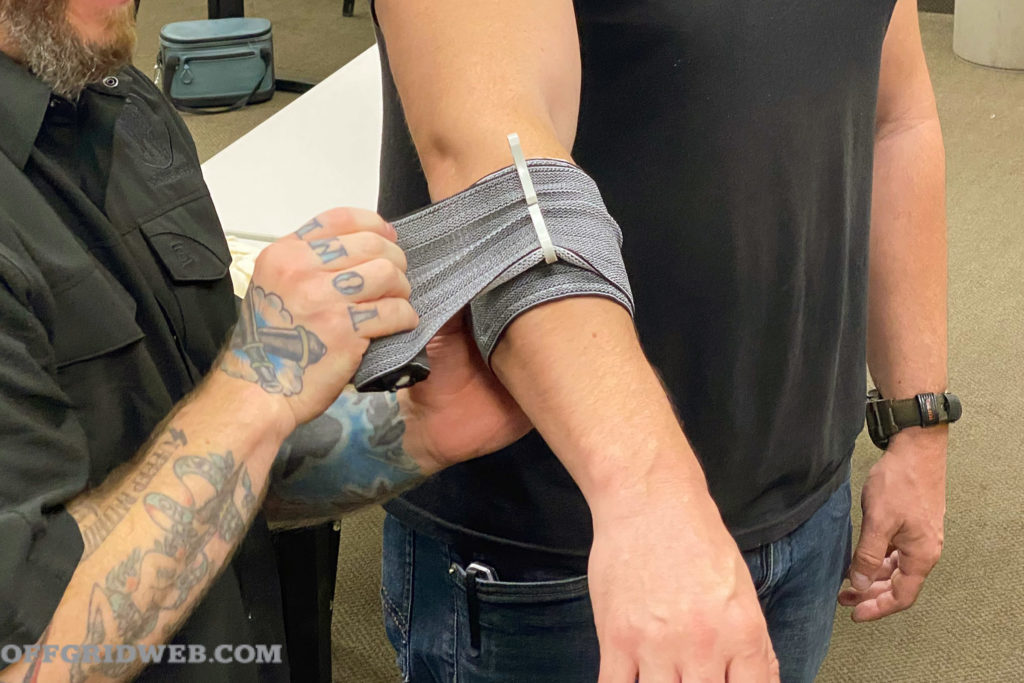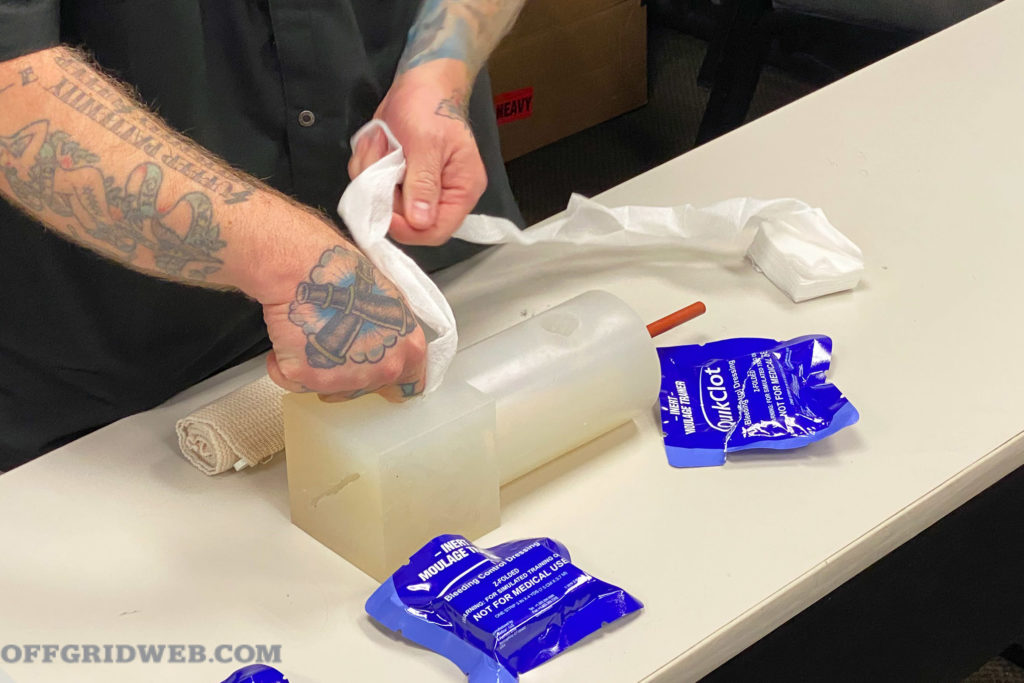RECOIL OFFGRID Preparation Dark Angel Medical Training: If It Bleeds, We Can Stop It
Fans of ’80s action flicks should recognize the title of this article as a twist on Arnold Schwarzenegger’s classic line from Predator: “If it bleeds, we can kill it.” Many of you reading this have spent years practicing defensive shooting and hand-to-hand skills. In other words, you know how to make a bad guy bleed if necessary. But how much time have you spent learning how to do the opposite — to stop bleeding and save lives? Statistically, you’re far more likely to use first-aid skills than fighting skills, so allocate your time accordingly. After recognizing room for improvement in my own medical skill set, I attended a two-day Direct Action Response class from Dark Angel Medical. Our instructor, Ross Francis, is a full-time paramedic and former U.S. Navy corpsman. Francis backed many of the lessons covered in the class with stories of firsthand experience in the field.
 Above: Every student had the opportunity for hands-on practice applying tourniquets, packing simulated wounds with hemostatic gauze, and wrapping compression bandages — essential techniques to stop blood loss.
Above: Every student had the opportunity for hands-on practice applying tourniquets, packing simulated wounds with hemostatic gauze, and wrapping compression bandages — essential techniques to stop blood loss.
The Dark Angel Medical training class began with a discussion of priorities. After calling 911, your first priority is always to ensure the scene is safe before administering self-aid or aid to others. Don’t rush in and become another casualty. Next, we discussed how to assess an injured person using AVPU — check if they’re Alert and awake, only responsive to Verbal stimuli, only responsive to Pain, or totally Unresponsive. If possible, explain that you’re a trained first responder, ask for permission to help, and inquire about what happened.
After initial assessment, you can proceed in order through HABCDE areas of focus: hemorrhage, airway, breathing, circulation, “da brain,” and expose/environment. In practice, this might look like doing a blood sweep to search for bleeding, confirming that the patient’s airway is unobstructed, and checking if they’re breathing normally — if not, it’ll be hard to overlook. For circulation, check pulse, skin temperature, color, and capillary refill (pinch a fingernail). “Da Brain” means neurologic function, commonly checked by examining their pupils and asking simple questions like “what day is it?” Expose means to fully scan the victim’s body, getting them “trauma naked” if necessary; environment means to keep them covered and warm.
Any injuries revealed during the HABCDE process should be treated in that order. For hemorrhage, we practiced applying tourniquets, wound packing, and pressure dressings. For airway injuries, we placed victims in the recovery position; we also practiced inserting a nasopharyngeal airway (NPA) on a test dummy. Breathing usually means CPR, but occlusive dressings (chest seals) may be necessary if the chest cavity was punctured (sucking chest wound). For circulatory issues, stop external bleeding and watch for signs of internal bleeding. If brain injuries are suspected, the best you can do is stabilize the patient and reassure them that help is on the way. Finally, keep them warm to prevent shock after blood loss; a Mylar blanket is great for this task.

Diagnoses and treatments for specific injuries were covered in detail, from gunshot wounds and eviscerations to burns and snakebites. Med kit gear selection was also covered. The class culminated in several practical exercises — each time, half the students left the classroom, and the other half were given a set of symptoms to act out. Students returned to assess and treat injuries as efficiently as possible.
If you’re not entirely confident in your first-aid skills, I highly recommend you take a class on the subject ASAP. This Direct Action Response course provided a great overview of a broad range of emergency medical topics. For more information on future Dark Angel Medical classes throughout the United States, go to darkangelmedical.com/training.
 STAY SAFE: Download a Free copy of the OFFGRID Outbreak Issue
STAY SAFE: Download a Free copy of the OFFGRID Outbreak Issue
No Comments